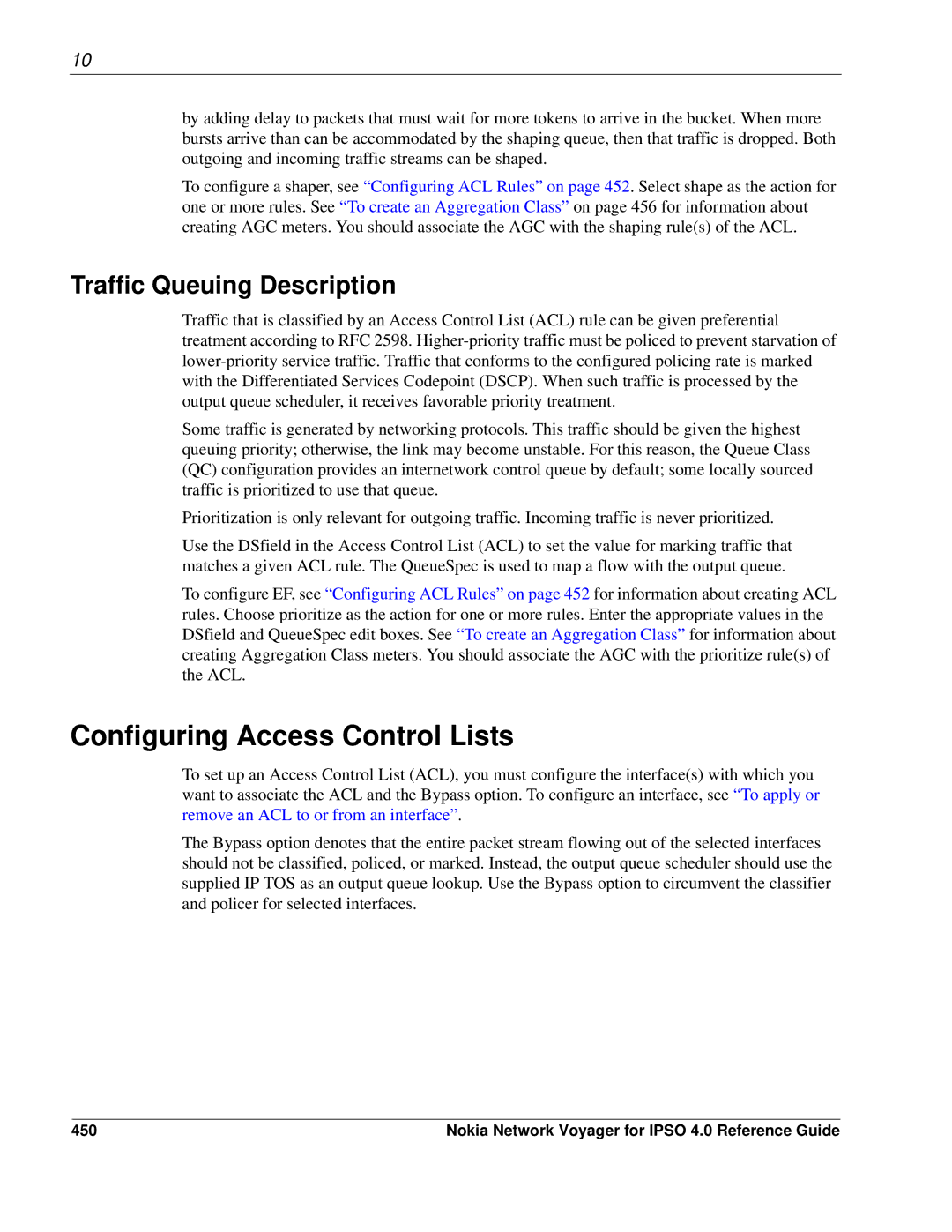
10
by adding delay to packets that must wait for more tokens to arrive in the bucket. When more bursts arrive than can be accommodated by the shaping queue, then that traffic is dropped. Both outgoing and incoming traffic streams can be shaped.
To configure a shaper, see “Configuring ACL Rules” on page 452. Select shape as the action for one or more rules. See “To create an Aggregation Class” on page 456 for information about creating AGC meters. You should associate the AGC with the shaping rule(s) of the ACL.
Traffic Queuing Description
Traffic that is classified by an Access Control List (ACL) rule can be given preferential treatment according to RFC 2598.
Some traffic is generated by networking protocols. This traffic should be given the highest queuing priority; otherwise, the link may become unstable. For this reason, the Queue Class (QC) configuration provides an internetwork control queue by default; some locally sourced traffic is prioritized to use that queue.
Prioritization is only relevant for outgoing traffic. Incoming traffic is never prioritized.
Use the DSfield in the Access Control List (ACL) to set the value for marking traffic that matches a given ACL rule. The QueueSpec is used to map a flow with the output queue.
To configure EF, see “Configuring ACL Rules” on page 452 for information about creating ACL rules. Choose prioritize as the action for one or more rules. Enter the appropriate values in the DSfield and QueueSpec edit boxes. See “To create an Aggregation Class” for information about creating Aggregation Class meters. You should associate the AGC with the prioritize rule(s) of the ACL.
Configuring Access Control Lists
To set up an Access Control List (ACL), you must configure the interface(s) with which you want to associate the ACL and the Bypass option. To configure an interface, see “To apply or remove an ACL to or from an interface”.
The Bypass option denotes that the entire packet stream flowing out of the selected interfaces should not be classified, policed, or marked. Instead, the output queue scheduler should use the supplied IP TOS as an output queue lookup. Use the Bypass option to circumvent the classifier and policer for selected interfaces.
450 | Nokia Network Voyager for IPSO 4.0 Reference Guide |
